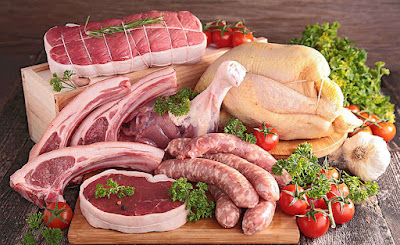How to control Salmonella and complylobacter
According to the World Health Organization (WHO), each year, foodborne illnesses:
- Affect 1 in 10 people.
- Cause 33 million healthy life years to be lost.
- Result in 125,000 deaths of children under five.
When these illnesses are profiled, it becomes apparent that Campylobacter and Salmonella are huge issues, accounting for 38% and 35% of illnesses, respectively, despite there being a plethora of other potential pathogens. They can both be found in multiple species but are commonly discussed in the poultry industry due to how they interact with birds. Consumers are told that thorough cooking of food will stop the transmission of these pathogens, but early steps can also be taken to control Campylobacter and Salmonella in poultry production and processing.
 |
| Controlling Salmonella and Campylobacter in poultry |
The journey of infection
While they can cause huge human health problems if they invade the human gastrointestinal (GI) tract, these bacterial organisms are normally asymptomatic in the bird. Campylobacter infection reaches a rapid growth phase in the higher body temperature of birds, which is why birds act as a big reservoir for infection. The bacteria are then passed on to humans, where they invade the GI tract. Salmonella is transmitted both horizontally (bird to bird) and vertically (from mother to chick through the egg). Both pathogens bind to attachment sites on the epithelial cells of the gut wall.
Go with the gut
Gut health and the microbiota can have a significant impact on pathogen colonization and, as a result, transmission. The microbiome is a complex subject, but it is well-documented through research that the microbiota and the gut interact with each other. The microbiota affects:
- Nutrition and growth.
- Intestinal morphology.
- Immunity.
Immunity is a hugely important factor when considering animal performance. An immune response is incredibly energetically expensive and detracts energy away from growth or egg production. Of a bird’s immune system, 70% operates through the gut. Ensuring that gut health and the microbiota are working effectively together is crucial to ensuring that immunity is fully functional.
Many factors can influence the microbiota and, hence, the immune status of an animal, including:
- Feed and nutrition.
- The environment.
- Medication.
Commonly, when abiotic or biotic stressors are allowed into the production system — or, for example, if antibiotics are used — the diversity of the microbiota is reduced, which then makes it easier for unfavorable or pathogenic organisms to proliferate and invade. Bacteria produce their own micro-environment, allowing for more of the same species to grow. They can then use quorum sensing in order to communicate with one another and begin their invasion. This is usually to the detriment of beneficial bacteria. When situations like this arise, pathogens like Salmonella and Campylobacter are common invasion species.
So, what does changing the gut microflora have to do with food safety? If we can create a more diverse, balanced microbiota, this shifts the balance of species in the gut, reducing the risk of pathogen colonization.
Recent genetic profiling work has highlighted a reduction in Campylobacter and Helicobacter genus groups, as well as the impact of microbiota modulation on Salmonella. It shows that the modulated microbiota significantly reduces the amount of Salmonella found in the caeca and the ovaries, which will directly reduce the chances of horizontal and vertical transmission. This is particularly important in the laying industry, especially with birds being taken past their vaccination protection frame.
How to change gut microflora
One means of controlling this is through the rehabilitation of the microflora after stress or challenge. This reverses any diversity losses and promotes immunity. The gut is vital, not only for immunity but for general performance, as this is the site of nutrient digestion and absorption. The efficiency of this process will directly influence performance. As a result, Actigen:
- Increases weight gain.
- Improves feed efficiency.
- Improves livability.
Recent research has looked at the impact of Actigen on the caecal microbiota, which directly influences the metabolome and increases the amount of short-chain fatty acids found in the caeca. A changing metabolome creates a better environment for beneficial bacteria to grow, which means that they can outcompete less favorable species. Eventually, this means that the microbiota changes in profile. Early life nutrition is key to influencing the mature microbiome through the impact on succession to climax colonies, although beginning rehabilitation at any age will have an impact. This impact will then start to influence the house microflora, which will then impact the next flock.
Poultry meat and egg consumption is on the rise and is projected to continue growing at over 2%. This growth is a lifeline for farmers. With this increase, it is crucial that we do not allow there to also be an increase in foodborne illness or a food scare, like the Salmonella scare in the U.K. in the 1980s. Events such as these, even if not based solely on facts, can be detrimental to industries. Ensuring our food standards and safety will help us maintain customer trust and allow us to continue driving growth in sales. To do this, we must look within our flocks and focus on maintaining microbiota diversity.
